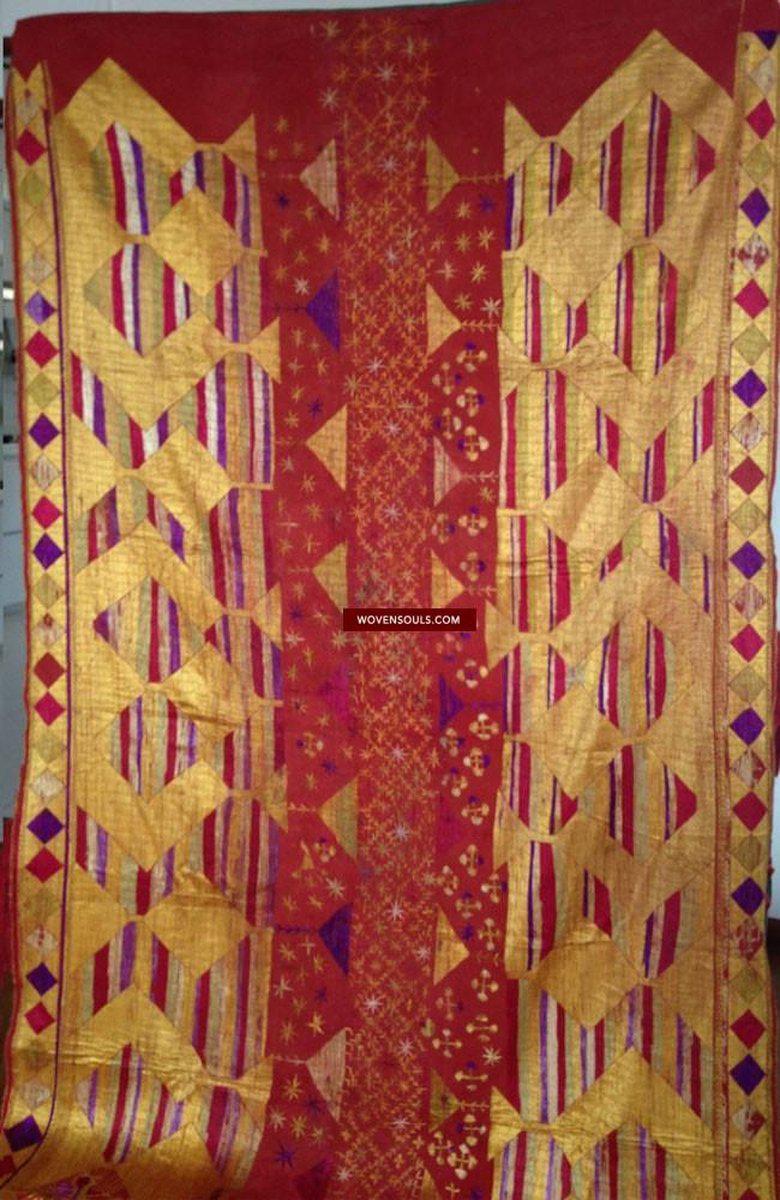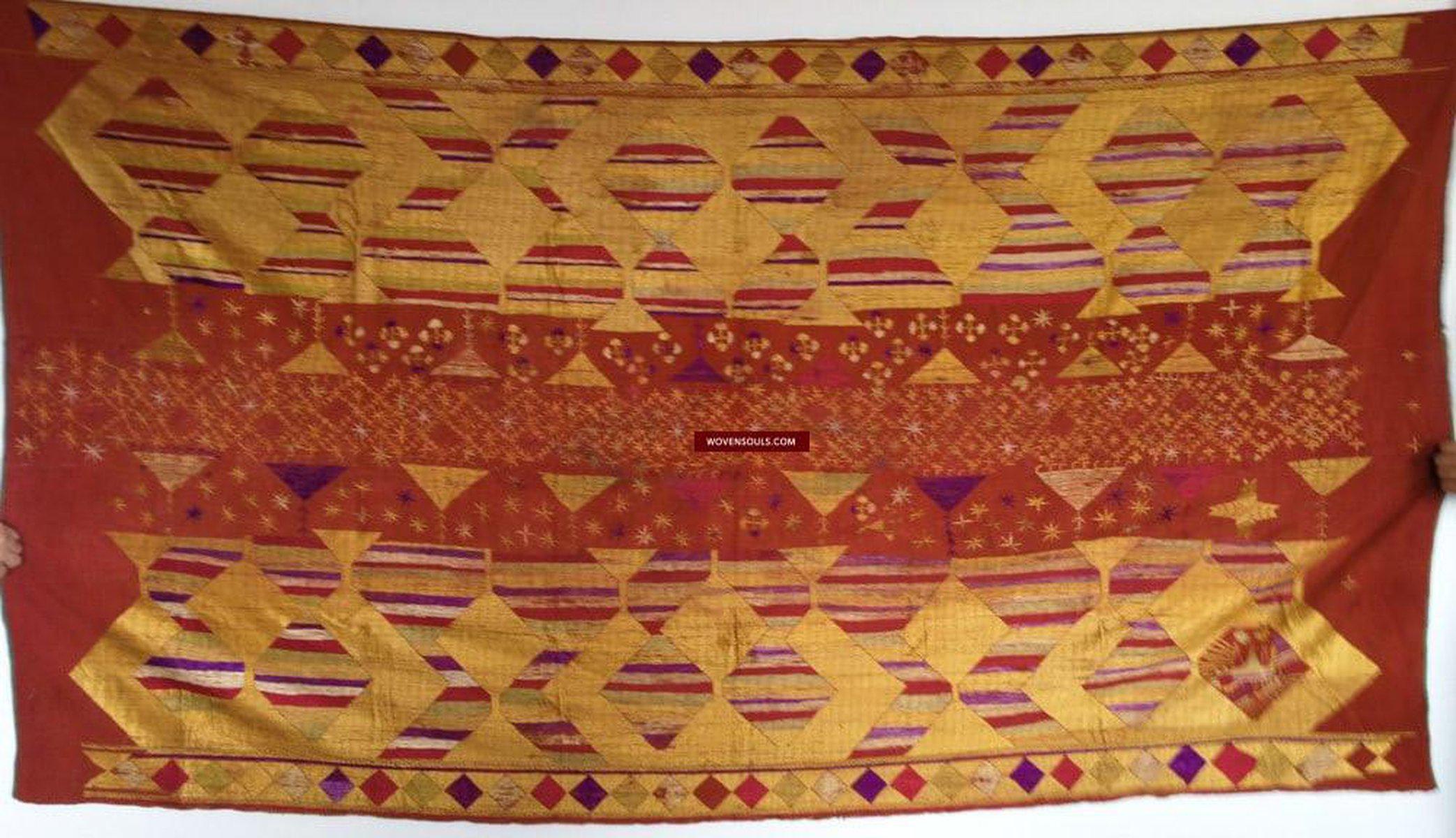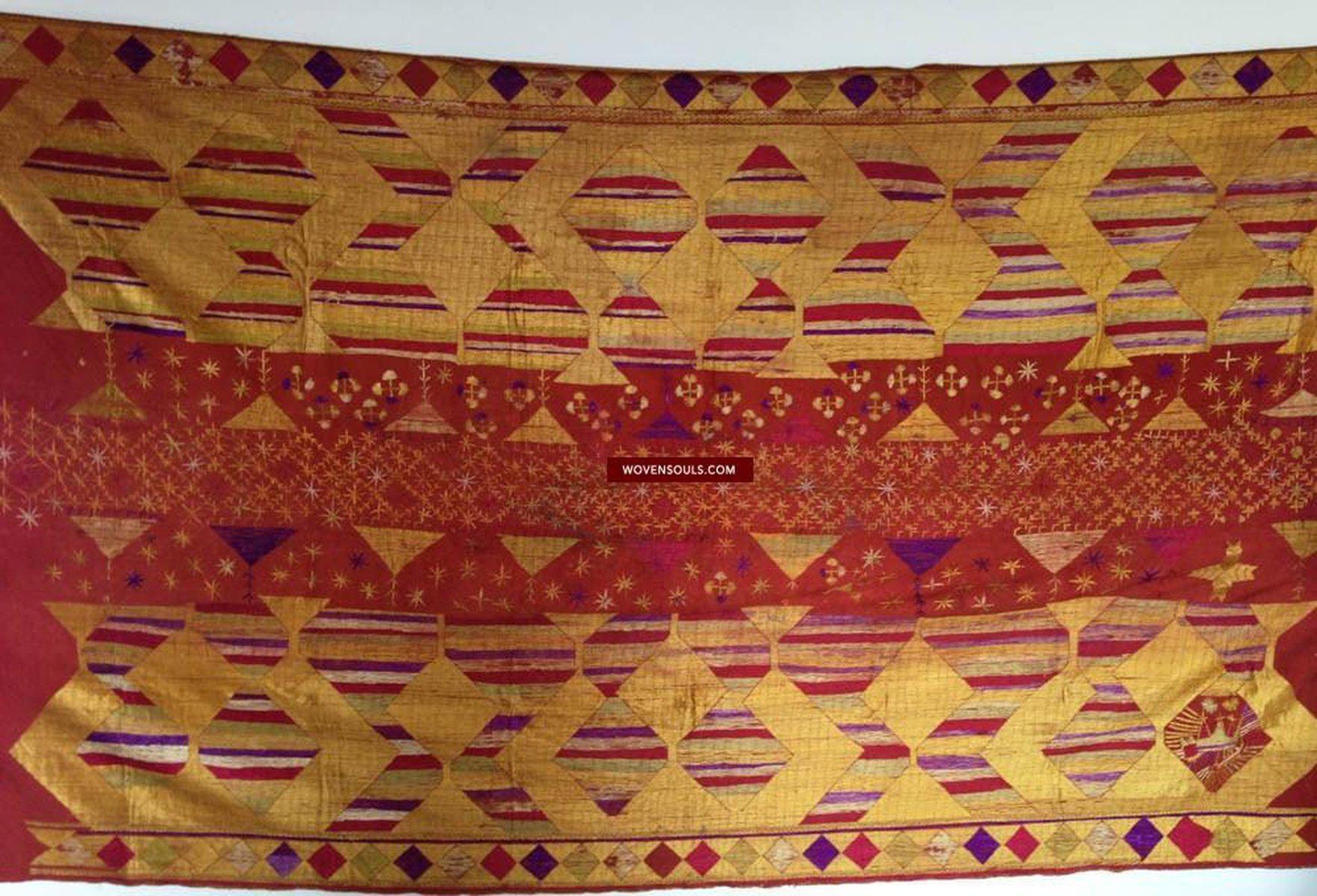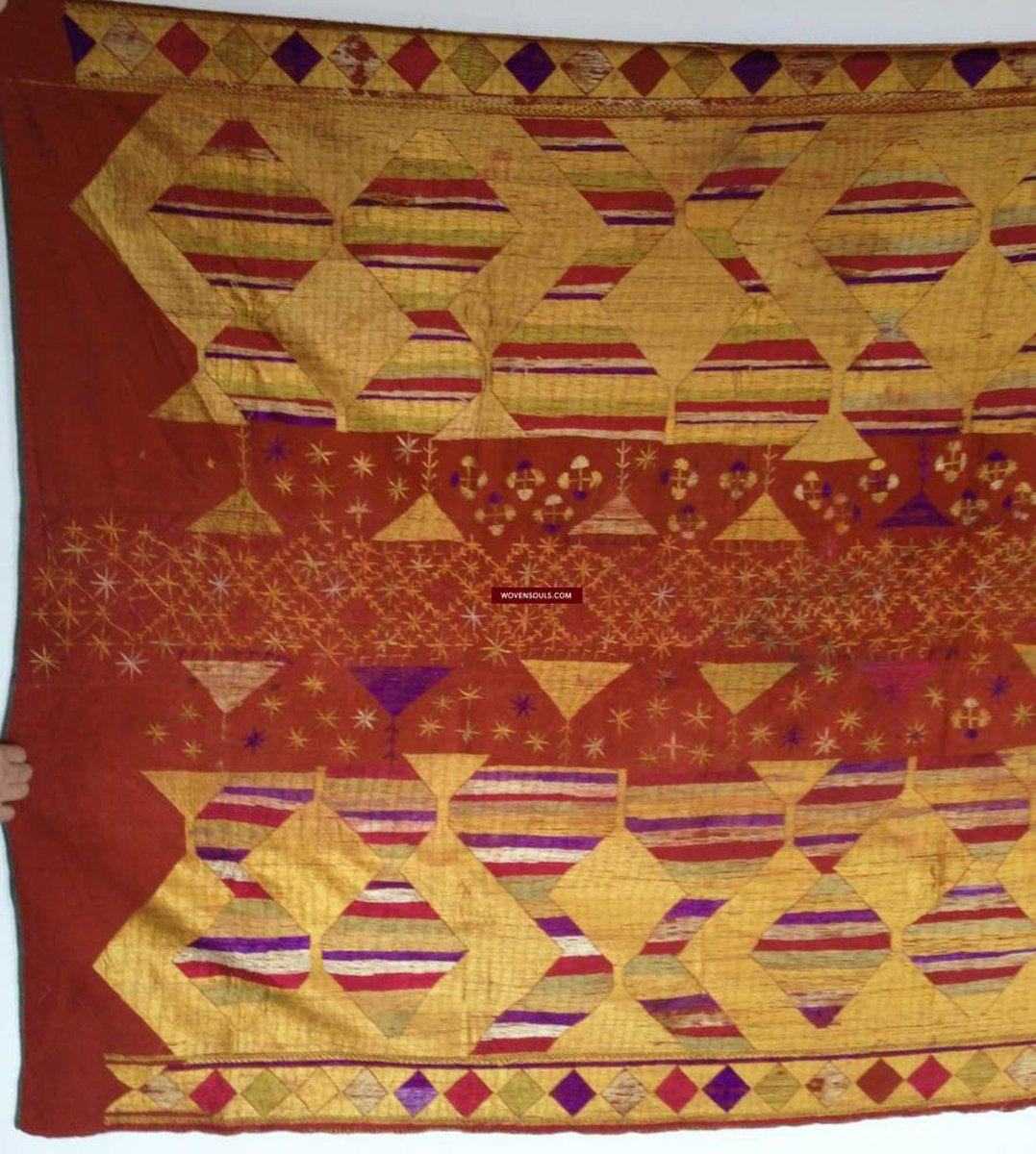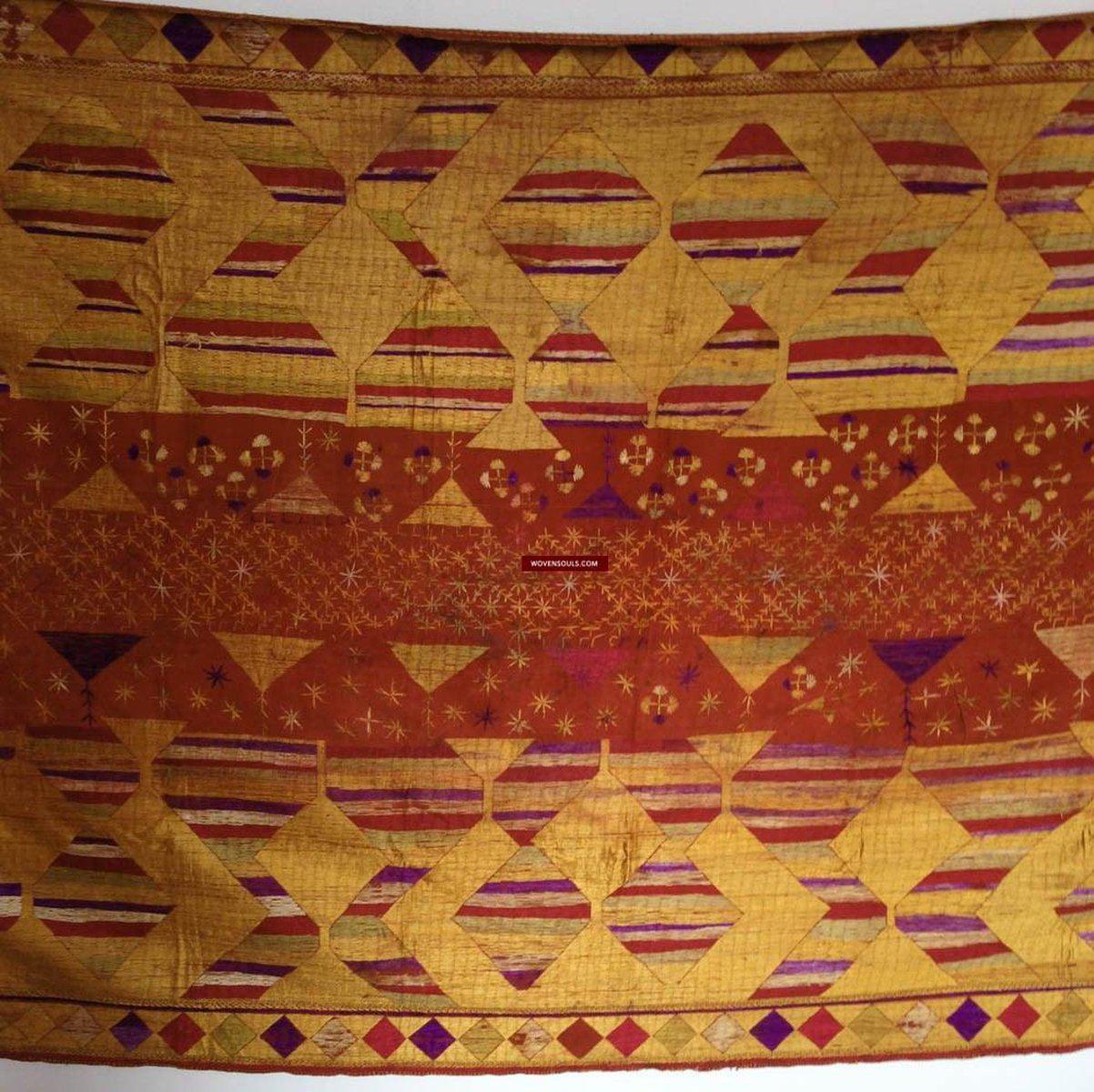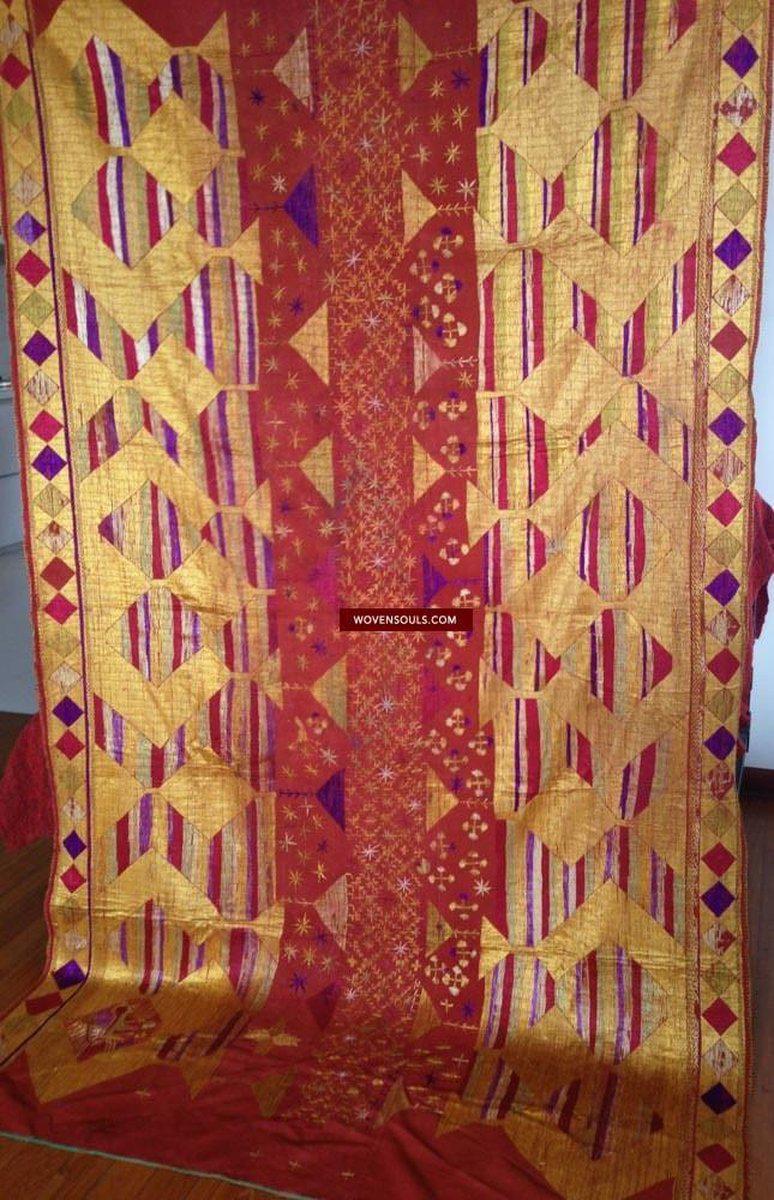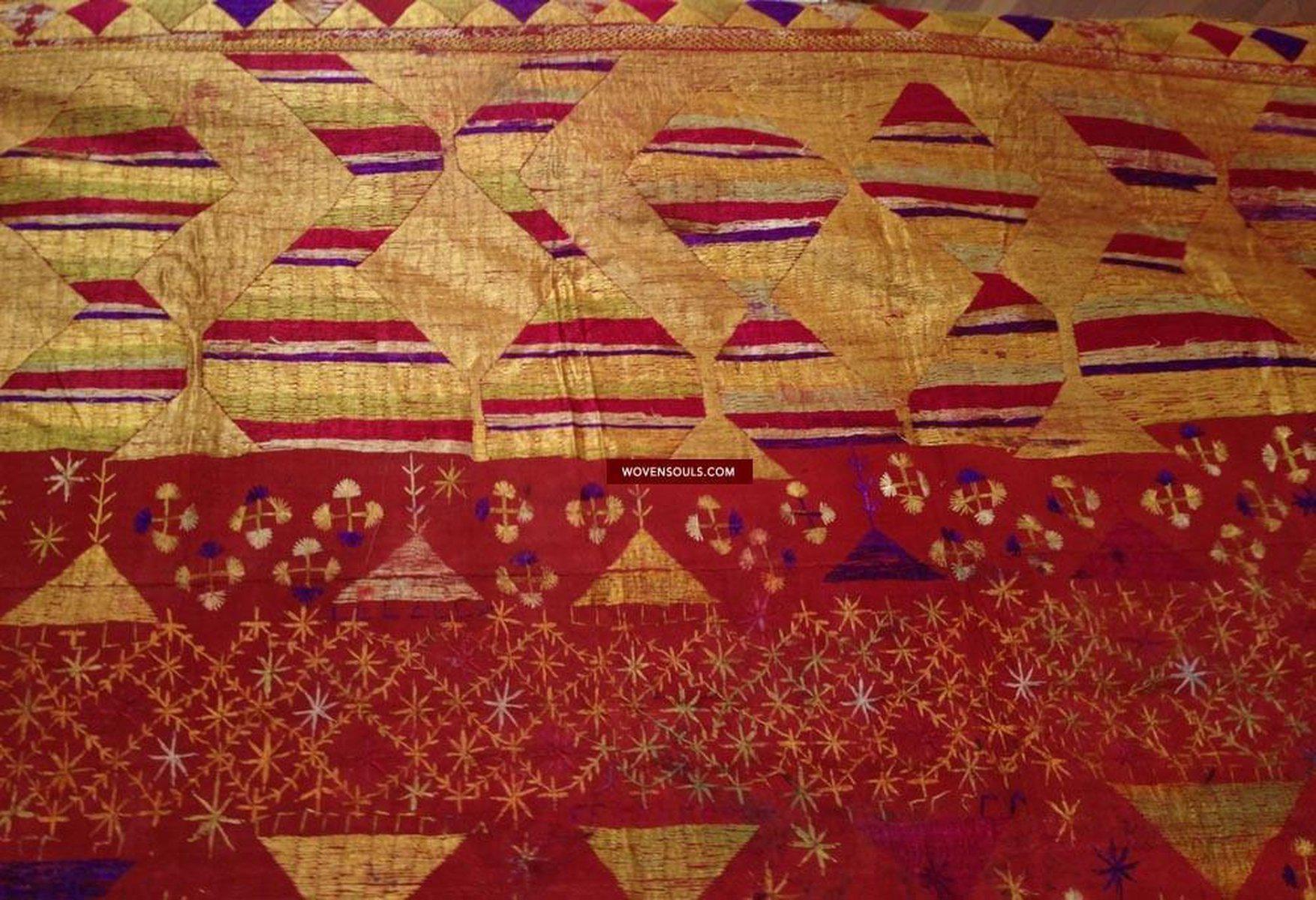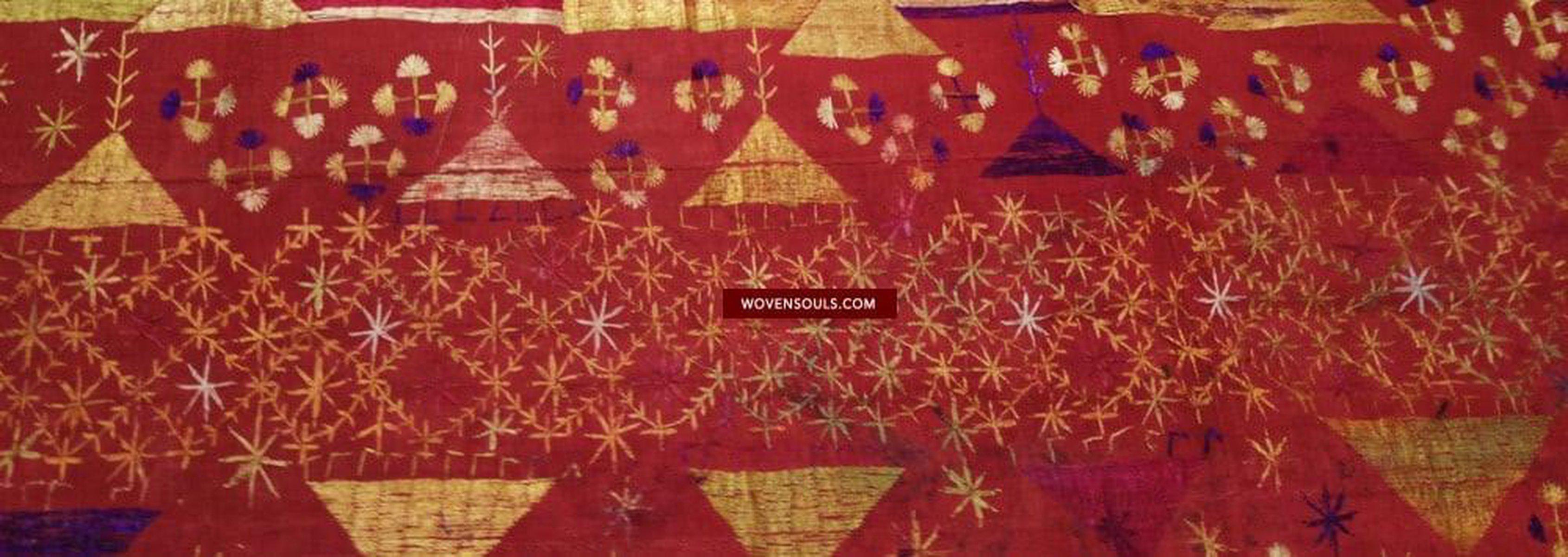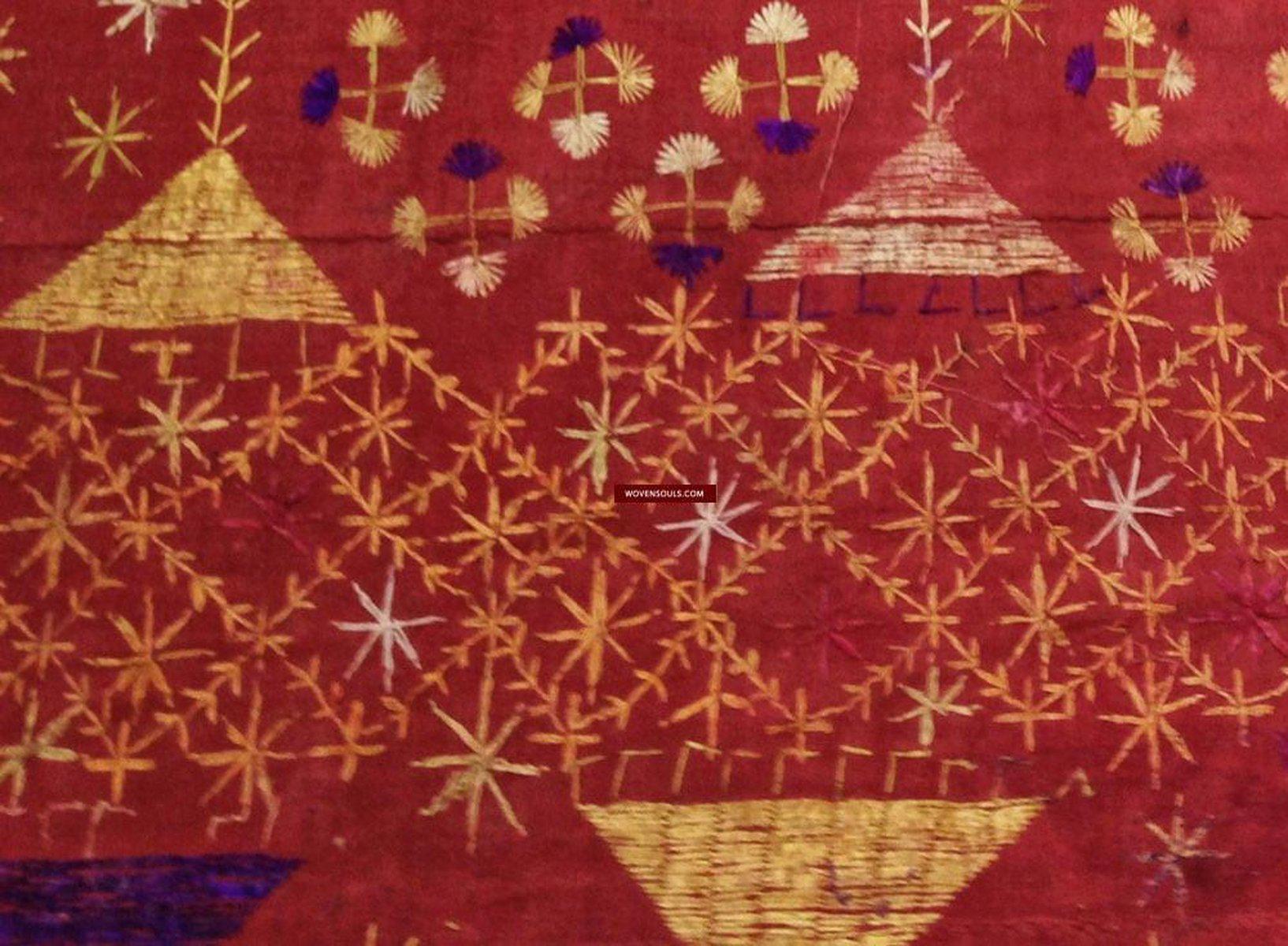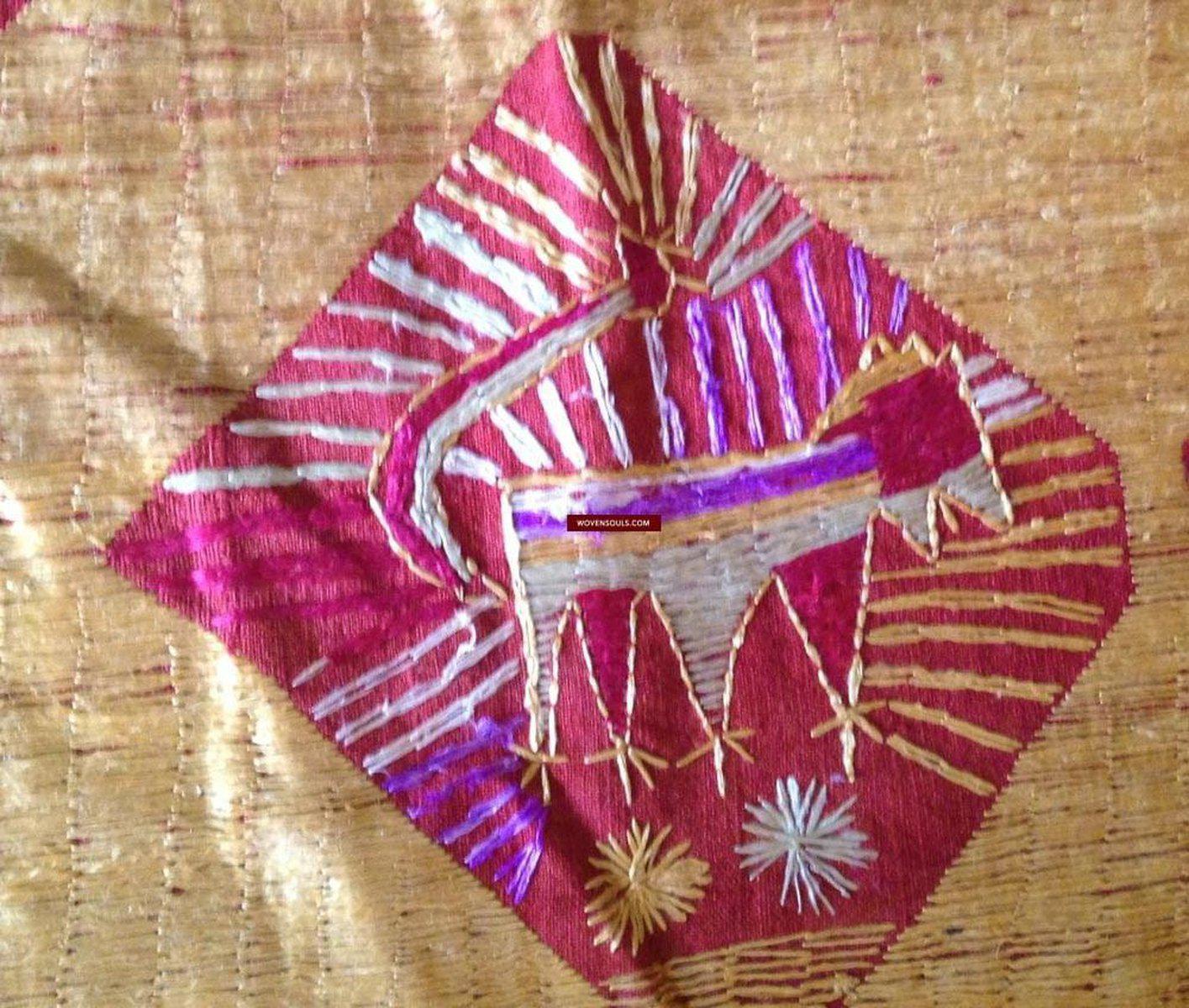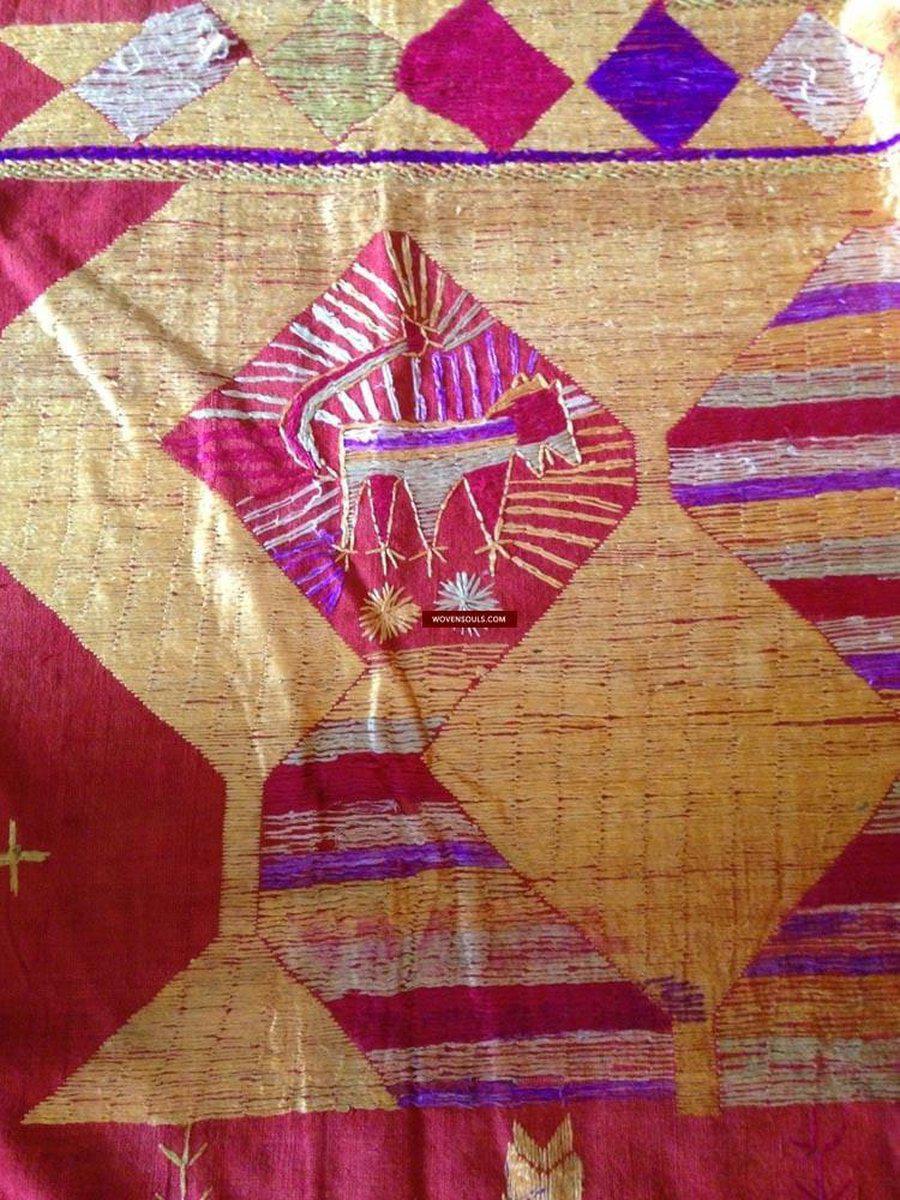714 Antique Sarpallu Phulkari Bagh SOLD
Sold to a discerning Antique Art-Lover
***
Wedding Textile Art from Punjab usually created by the grandmother, mother & aunts of the bride over several years. Handmade cotton cloth is embroidered with silk. Used at the wedding and subsequently throughout life at other family ceremonies.
Superb example of a Sar Pallu.
TEXTILE ART FORM: Silk Embroidery covering the Handmade cotton base
PATTERN / MOTIF: Sar Pallu Picasso-esque art
BASE CLOTH MATERIAL: Handwoven Cotton
BASE CLOTH COLOR: Deep Rust
NUMBER OF PANELS IN BASE CLOTH: 3
STITCH LAYOUT TYPE: Long dovetail
SIZE: 130 cm x 236 cm
AGE: Age unknown but estimated to be 50-60 years old
REGION: Punjab, Undivided India
NOTES:
1) Use of 5 colors of Silk
2)Note the spectacular Animal motif!!! Rare!
3) The art is clearly spectacular and unforgettable but the silk thread is laid out sparsely. This suggests limited resources. It is possible that the family, though wealthy in creativity was financially challenged and the silk available for use was not abundant. This adds a special dimension to the artwork - a glimpse of the soul of the art & its creation.
______
CONDITION REPORT:
STITCH DENSITY: Sparse overall. In the inner sections of the left and right embroidery bands, the sparseness increases. This appears to be a deliberate move as the sparseness is uniformly present along that band. It could have been with the aim of creating a "transparent" effect or could be due to financial constraints in purchasing raw materials.
THREAD LOSS: Some thread loss seen in purple & cream silk threads.
STAINS: Minor stains seen.
HOLES / TEARS / REPAIRS: None seen
Antique Sarpallu Phulkari Bagh
***
This item has spent a lifetime being used for the purpose of its creation with the original artist/user. Signs of this life lived heartily may be present on the piece in the form of stains, thread loss, loose threads, holes, tears, color run and other imperfections. Therefore the condition must be assumed to be “not” perfect. More photos of such imperfections will be provided on request.
***
